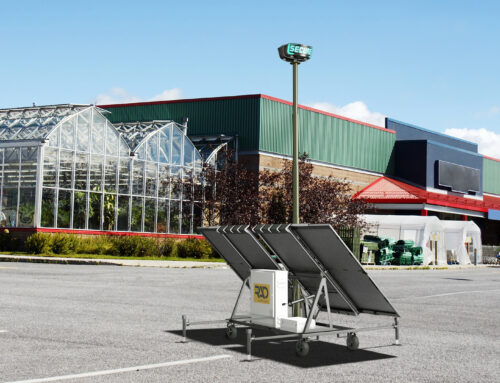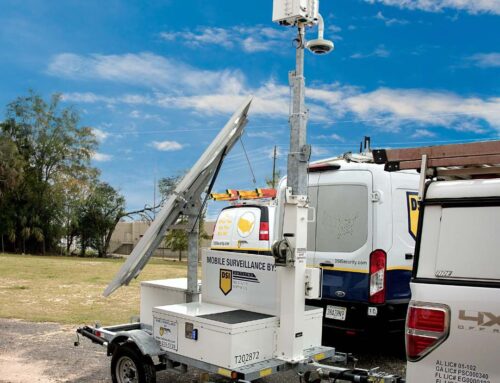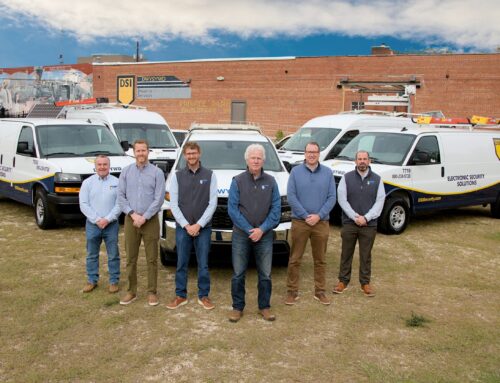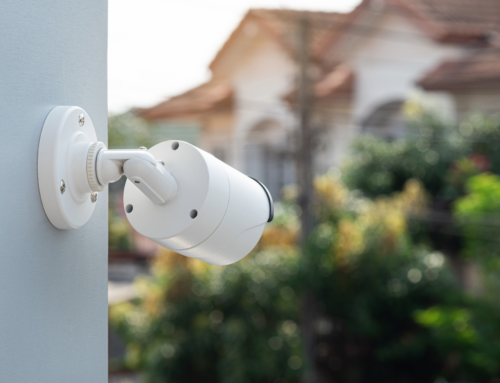By Jamie Ridenhour
During the last few tumultuous months and years, the role that transportation of goods plays in our economy, supply chain, and daily lives has become very evident. On average, the U.S. transportation industry moves over 49 tons of freight valued at over $53 billion per day. Up to 73% of that freight is moved by truck, making truck transportation security an obvious concern.
Cargo thefts increased by nearly 40% during the pandemic and the average value of a cargo theft incident also rose to a five-year high of $166,854. Some thefts have been valued at over $1 million. Thefts cost shippers and trucking companies over $30 billion a year in the U.S.
Transportation security starts at the warehouse or shipping facility. Many of the highest value incidents occur at these locations due to the volume of goods found in one place. Attention to security is of primary importance for warehouses and terminals.
Securing the perimeter around a warehouse is the first step in preventing cargo theft. As we discussed recently in Best Practices for Securing Perimeters, numerous physical and virtual layers of security should overlap to make theft as difficult as possible. Good perimeter security also enables security personnel to better monitor the activities around the facility and possibly spot a theft in the planning stages.
A key component of any perimeter security plan is access control. This subject can get complicated due to the sheer volume of vehicles and drivers that must access a shipping facility, but stringent access requirements must be adhered to. Drivers should only be granted access if credentials have been verified with the transport provider. Enhanced video surveillance systems should be employed to capture license plate information from both tractors and trailers. Security personnel must be prepared to immediately intervene if any credentialing issues arise.
Warehouses should be equipped with up-to-date video surveillance systems that not only record video, but can help to identify unusual activity, such as movement in an area where there should be none. Robust inventory control systems are also a must-have item. Inventory tracking should be able to quickly identify shortages. Warehouse security measures should be regularly evaluated along with inspections of the facility to identify any vulnerabilities.
Once a load has left the warehouse facility, the responsibility for the cargo falls on both the driver and their dispatch office. Transportation providers should make security training a priority for both drivers and home base personnel. Training should be reviewed at least annually with all employees and updated as necessary.
Training should cover a broad range of security topics, such as general best practices for stationary and in-motion security, the effective use of provided security devices and tracking technology, parking rules and response protocols. Time should also be spent discussing current fraud and deception schemes, notable high-risk areas and ways to improve awareness and spot potential threats.
Transportation providers should have a written supply chain security policy in place and it should be supported by senior management. Ideally, there should be a formally appointed person responsible for supply chain security. The designated employee should be the single point-of-contact for security issues and have the authority to respond to inquiries and make security decisions on behalf of the organization.
Security of cargo in motion is obviously important and transport providers should invest in the best technology possible and have protocols in place to make sure it is functioning properly. A wide range of technologies are available, from the relatively simple locks and trailer seals to sophisticated GPS-based logging and tracking systems.
Drivers must be trained to keep cabs and trailers locked at all times when unattended and to always keep keys with them. Remote electronic locks that require key code to be entered by either the driver or dispatch office are also seeing wider use. Brake, transmission, steering and similar immobilizer locks are also a good option. Any physical locks should be resistant to tampering, have keys that are not duplicable, and should be able to resist defeat for at least ten minutes.
Staying away from high risk environments is one of the best ways to avoid theft. This strategy has increasingly become the responsibility of home office personnel. Travel lanes should be researched and drivers given a list of approved parking and rest areas as well as “no stop” zones. This information is based on site audits, driver feedback, and other available information, such as industry groups, law enforcement, and reporting agencies. Contact information for law enforcement agencies along all travel lanes should also be easily available.
This information should be reviewed at least every six months and updated when necessary.
Drivers must adhere to numerous regulations regarding rest breaks and have the responsibility of adhering to company practices for choosing safe parking areas. Transport providers need to monitor driver activity to make sure rules are followed. Doing so decreases both theft risk and liability.
Advances in technology makes such oversight possible. Modern trucks are typically equipped with tracking devices that relay position every 5 minutes, providing constant and timely location information. Many trucks are also equipped with navigation devices that can have routes remotely loaded by dispatch personnel. Any deviation from the prescribed route or stoppage at an unapproved location can be discussed immediately with the driver, reducing the chances of theft involving a driver or of potential hijacking.
It should be apparent by now that truck transportation and logistics security can be a complex subject, and the responsibility is shared by nearly everyone involved in a trucking organization. Professional security firms can offer quite a bit of assistance, particularly when it comes to securing the transport and logistics facilities, terminals, and warehouses. Partnering with a security provider can allow trucking firms to better focus on the logistics at the core of their business.







